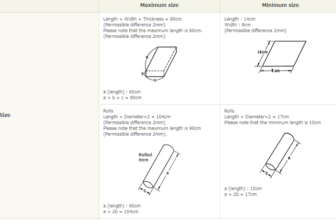
If you’re running an eCommerce website, driving traffic to your product pages is crucial for boosting sales. One of the most effective ways to achieve this is through Search Engine Optimization (SEO). In this guide, we’ll walk you through 10 proven SEO strategies every store owner should implement to increase website traffic and ultimately, sales. These strategies will help you learn how to rank product pages effectively.

1. Use the Right Keywords
The foundation of SEO success lies in choosing the right keywords. Search engines rely on these terms to rank pages in search results. When selecting keywords, it’s essential to think like your customers. Consider common search phrases like product names, colors, or specific features.
To find the best keywords for your niche, utilize tools like Google Ads or Keyword Tool. These will help you discover relevant terms that potential customers are searching for. Ensure the keywords are naturally integrated into your product descriptions, as this is crucial for ranking product pages high in search results.
2. Create Unique Content
Content is king in SEO. The product descriptions on your website must be unique. Reusing manufacturer descriptions can harm your rankings, as Google penalizes duplicate content. Even if you’re dropshipping products, it’s crucial to rewrite descriptions in a way that’s engaging and informative.
For larger stores with many products, automating part of the process can save time. Tools like Magento 2 SEO extension can help you create unique, SEO-friendly descriptions across your entire product catalog.
3. Optimize URLs for SEO
URLs play an important role in rank product pages. A clean, descriptive URL helps both search engines and users understand the page content. Avoid long, confusing URLs filled with symbols. Instead, aim for short and simple URLs that include relevant keywords.
For example:
- Product Category Page: www.yoursite.com/category/
- Product Subcategory Page: www.yoursite.com/category/subcategory/
- Product Page: www.yoursite.com/category/subcategory/product-name/
These types of clean, descriptive URLs will improve your chances of ranking product pages.
4. Write Compelling Metadata
Metadata, including title tags and meta descriptions, is essential for SEO. These elements appear in search results, influencing whether users will click on your page. Ensure that your metadata is both enticing and includes relevant keywords. An optimized meta description can significantly increase click-through rates.
5. Leverage Rich Snippets
Rich snippets are a valuable tool for SEO. They display additional information such as product prices, ratings, and availability directly in search results. By adding structured data to your product pages, you enhance your chance of appearing in rich snippets. This, in turn, can boost your rankings and visibility.
For more information on implementing structured data, visit Schema.org.
For more insights on rich snippets, explore our TinyDeals Blog.
6. Include Images and Videos
Visual content not only enhances user experience but also boosts SEO. Google considers user engagement when ranking pages, and high-quality images and videos can keep visitors on your site longer. Additionally, optimize your images with descriptive alt text to include more keywords and improve your SEO ranking.
7. Maintain Consistency
Consistency is key to maintaining strong SEO. Ensure that the tone, design, and content across your website align with your brand identity. This includes offering high-quality products, using targeted marketing strategies, and keeping your design user-friendly.
When your content is consistent, you prevent issues like duplicate content and poor user experience, which could harm your SEO rankings.
8. Ensure Mobile-Friendliness
A large portion of eCommerce traffic comes from mobile devices, so your site must be optimized for smartphones and tablets. Google rewards mobile-friendly sites with higher rankings, and poor mobile performance can drive users away. Make sure your pages load quickly and are easy to navigate on any device.
9. Improve Page Load Speed
Page speed is a critical factor in user satisfaction and SEO rankings. A slow website can lead to higher bounce rates, where users leave before exploring your products. Aim for fast load times—ideally under one second. Google tracks user engagement and may lower your rankings if your site loads too slowly.
10. Incorporate Product Recommendations
One way to keep users on your site longer is by showing related or recommended products. This not only improves user experience but also enhances SEO by increasing the number of pages a user views. Featuring related products can also lead to higher conversion rates, as visitors are more likely to add additional items to their cart.
Conclusion
SEO is a powerful tool for increasing visibility and driving traffic to your eCommerce store. By following these 10 strategies, you can optimize your product pages, improve rankings, and attract more customers. Implement these techniques consistently, and you’ll be on your way to a stronger online presence and higher sales. Learning how to rank product pages effectively will transform your eCommerce business for the better.





![Finest HEPA Air Purifiers to Promote On-line + Wholesaler & Dropshipper [China/US/UK]](https://www.tinydeals.net/blog/wp-content/uploads/2025/01/image-165-1024x1024-336x220.png)
